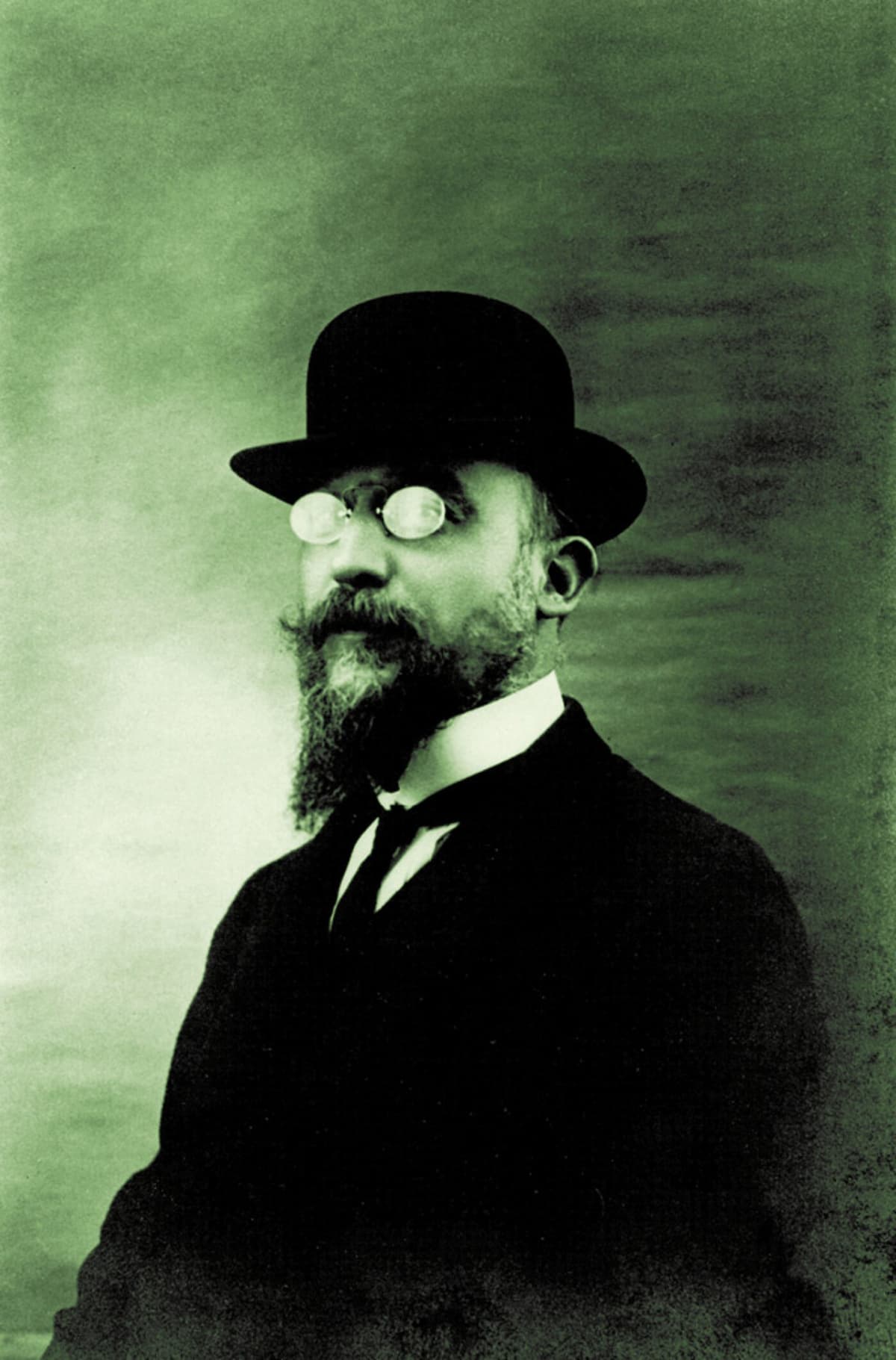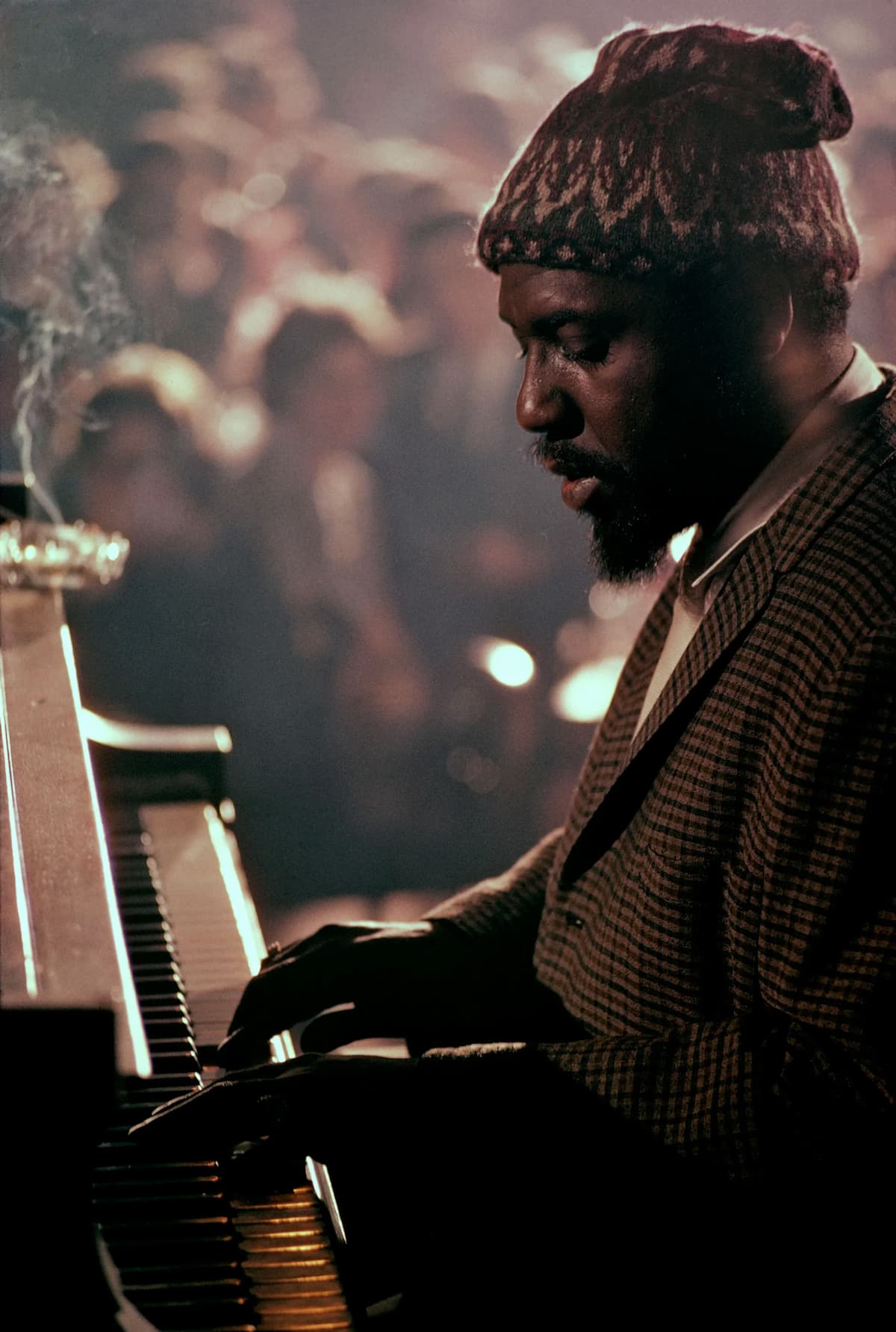Erik Satie and Thelonious Monk are two of my favourite artists, and this is no surprise as if one pays close attention, they are both very similar in their approach to music — and perhaps in their own lives too. They both evolved in two different atmospheres, yet throughout their career, the crossing points are frequent and the stylistic influences are at times surprisingly common. Let’s look a little more in-depth at the Satie in Monk and the Monk in Satie.
Erik Satie ~1913~ Embryons Desséchés

Erik Satie © Atlas Press
Both Satie and Monk are partially self-taught and throughout their life, have decided to ignore many of the rules that had been established before them; in their rhythmic, melodic and harmonic choices, one finds many instances of novelty. For instance, Monk is well known for adoring the tritone interval, often avoided in music, whilst Satie is considered a pioneer in exotic scales — in fact, he would often invent his own. This sometimes led to both being seen as clumsy, perhaps limited in their technical abilities — it is true that neither of them was a technician — this is of course a misconception, and both had great control of their instrument. It was their vision which dominated. There is a musical device that can often be found in both musicians’ music, a remnant of their cabaret influence — although to a very different result.

Thelonious Monk © Burt Glinn/Magnum
Both Satie and Monk make use of the left-hand alternating between bass and chords, and if it emerges and conveys two very different atmospheres, the underlying technique is the same. Both composers have found a certain balance between serenity and intensity, humour and seriousness — at times even finding the balance in one single work. Surrealism is a common element to both, whether in the stage behaviour of Monk, or the almost absurd comments over Satie’s scores. This peculiarity appears in their individuality too. In their personality and physical appearance, and in some instances it almost feels like they look alike. Both are bizarre and surely odd — only in their way of dressing one can notice their eccentricity. It was of course deliberate and part of their artistic persona, and their intense devotion to music. Both artists seem to enjoy playing around with what can be seen as the psychology of the masses, in that case, their audience.
As Monk once said, sometimes it is better to let people think you are crazy. In his case unfortunately, mental illness drove him away from the public world and eventually led to silence. Monk has been influenced by classical music — from Chopin to Stravinsky, in fact, his knowledge was quite impressive. Satie in return has been influenced by the cabaret and the early jazz scene of Paris. When two worlds meet. Through their approach, Satie and Monk created a unique sound— and if it has been imitated many times, never again have we heard similar music. Monk was born in 1917, Satie died in 1925. During eight years, these two very different yet similar geniuses co-existed, but never met.
Thelonious Monk Piano Solo – ‘Round Midnight
It is undeniable, both musicians have been hugely influential in their respective genres. There is a before and after Satie, just like there is a before and after Monk. Both of them are seen as some of the most interesting musicians of the 20th century. Perhaps what one can enjoy the most though, is the deep human connection between the artist and the listener; through their music, and the organic aspect it has, one feels that he can relate to the artist, the human behind the music. There is no better way to illustrate than to show musically, therefore I created this playlist which blends both musicians’ music!
For more of the best in classical music, sign up for our E-Newsletter

I’m really glad to see someone making this comparison between Satie and Monk. I did an internet search on comparisons of the two of them back in 2016, and only found a few things. I decided to try again today, after talking with a couple of people, when trying to explain the visual composition of a photograph I took. The composition is a off-kilter, but that is exactly what I like about it. It goes where you don’t expect it to. And therein lies the appeal, at least for some viewers, but not others. Thus, I asked the viewer if she knew of Thelonius Monk’s music, or that of Eric Satie. (She knew Monk, but not Satie.) But I’m not sure if she could make the leap I was trying to point to.